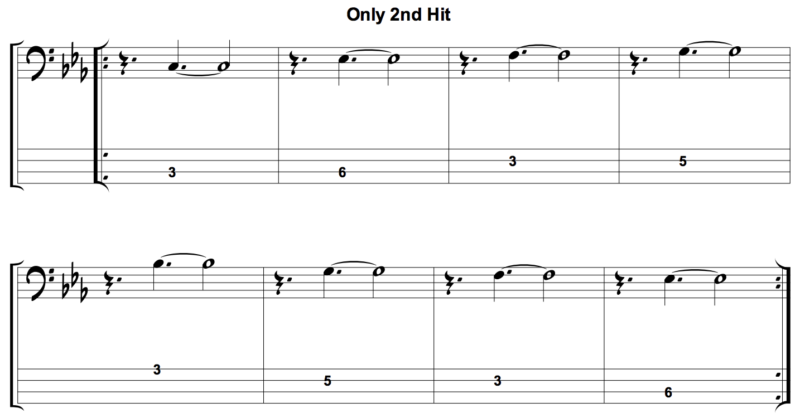This is the first lesson dealing with my favourite topic of odd time signatures. In this lesson I’m going to show you how to develop a more natural feel for odd time using 5/4 as an example. By using a musical phrase and outlining the main accents of the bar it’s possible to feel your way through an odd time signature without the incessant counting that many people use.
Finding The Groove In 5/4
As a musician, you are likely to come across songs with odd time signatures sooner or later. This is fine if you have a riff that you can memorise, but it becomes a bit trickier when you have a chord progression to work around without any written parts.
One of the keys to getting a natural feel for a new time signature like 5/4 is to pay attention to the main accents in the bar. Don’t try to count each individual beat as you don’t want to be consciously thinking about the time, but rather feeling it.
For the first exercise, we are going to use the following rhythm:
(Play on bracketed notes)
(1) + 2 (+) 3 + (4) + (5) +
Instead of thinking of the individual beats, try thinking of two groups of three followed by two groups of two.
(1) + a (2) + a (3) + (4) +

Subdividing Odd Time Signatures
You may find that subdividing the rhythm and filling the groove in with extra 8th notes helps you get to grips with a new time signature quicker.
If you take a look at the main phrase again, you will see that it is made up of two dotted crotchets and two crotchets. This can be broken down into two groups of three quavers and two groups of two quavers. Underneath are a number of different ways you can practice adding the subdivisions into this groove.





Removing Hits
Taking notes out can actually be a lot harder than it sounds as you can no longer rely on the subdivisions to keep you in time. Feeling the hits rather than counting them will help you here.

Variation
To change things up a bit, we can create a more complex exercise by including the notes of the C minor pentatonic scale:

Try using this scale to create your own basslines in 5/4 – use different combinations of subdivisions to vary your riffs.

Removing Hits (Revisited)
We are now going to revisit taking notes out of the groove as it is a great way to ensure you can feel and isolate each individual beat.




















Another great lesson! These videos are really helping me break out of a rut I’ve been in with both guitar and bass for a while. I’m understanding concepts that have eluded me for ages.
A request: Please, please, please do a video about key changes/modulations within a song. It’s one area where I still get pretty confused. It would really help those of us who feel a bit limited by the harmonized major scale and want to take our writing to the next level.
Thanks and for god’s sake, keep these videos coming!
Hi Mark, Brilliant lesson as usual. I have avoided 5/8 time in the past but now i feel confident to take it on. You have explained it so well and proven that its not as hard as i thought Thanks
Can it be played at another part of the bass? Like with C on 10th fret od the D string? Or on any other finger-friendly note? My hand is getting really painful while trying to use ring and index finger to play it on low C, is that a purpose of this exercise?
Hi, I’m a little confused on the download protocol; I’d like to download the backing rhythm to save to my hard drive to practice at my own leisure, and in the video, you said it was possible to download the lesson. However, when I right-click on the backing track, it wants to save the complete webpage. Can you please advise, or is this something I have to stick to visiting the sight to practice?